Liangding Li
Towards Next Generation of Pedestrian and Connected Vehicle In-the-loop Research: A Digital Twin Simulation Framework
Dec 08, 2022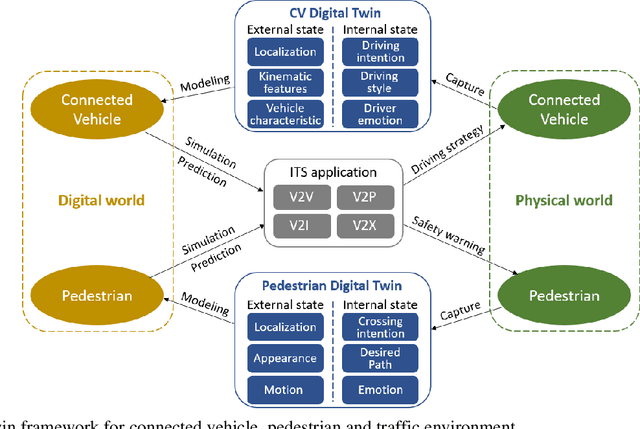
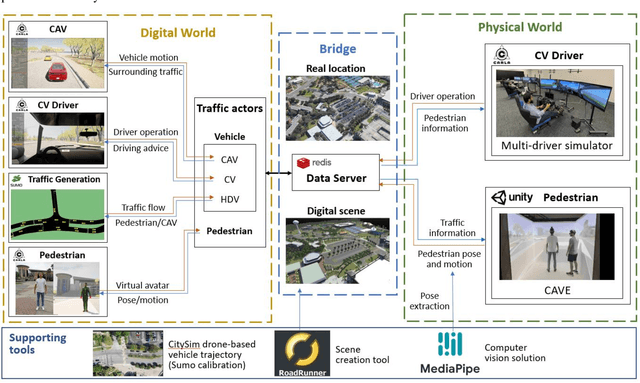
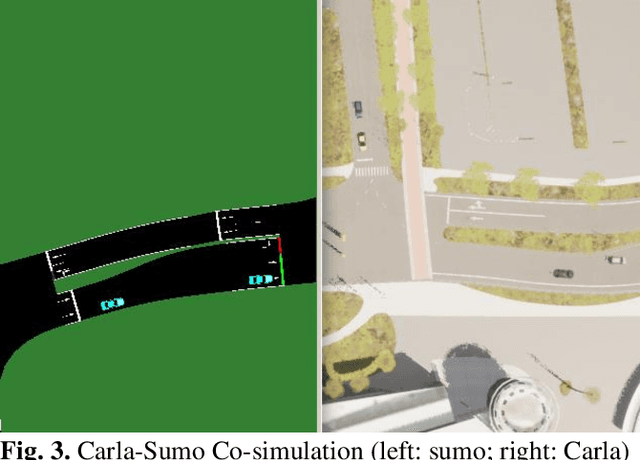
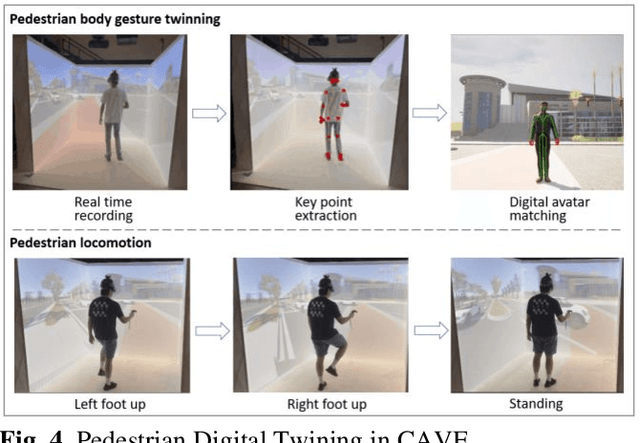
Abstract:Digital Twin is an emerging technology that replicates real-world entities into a digital space. It has attracted increasing attention in the transportation field and many researchers are exploring its future applications in the development of Intelligent Transportation System (ITS) technologies. Connected vehicles (CVs) and pedestrians are among the major traffic participants in ITS. However, the usage of Digital Twin in research involving both CV and pedestrian remains largely unexplored. In this study, a Digital Twin framework for CV and pedestrian in-the-loop simulation is proposed. The proposed framework consists of the physical world, the digital world, and data transmission in between. The features for the entities (CV and pedestrian) that need digital twined are divided into external state and internal state, and the attributes in each state are described. We also demonstrate a sample architecture under the proposed Digital Twin framework, which is based on Carla-Sumo Co-simulation and Cave automatic virtual environment (CAVE). The proposed framework is expected to provide guidance to the future Digital Twin research, and the architecture we build can serve as the testbed for further research and development of ITS applications on CV and pedestrian.
Condition Assessment of Stay Cables through Enhanced Time Series Classification Using a Deep Learning Approach
Jan 11, 2021

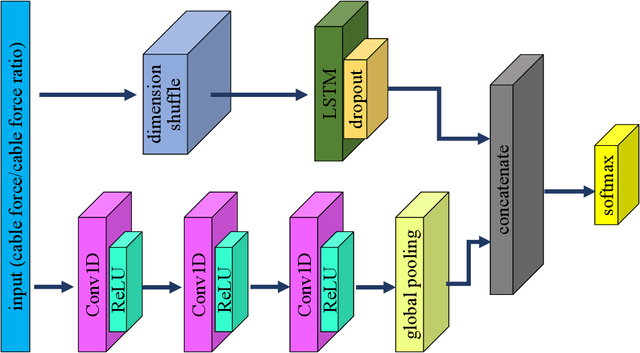

Abstract:This study proposes a data-driven method that detects cable damage from measured cable forces by recognizing biased patterns from the intact conditions. The proposed method solves the pattern recognition problem for cable damage detection through time series classification (TSC) in deep learning, considering that the cable's behavior can be implicitly represented by the measured cable force series. A deep learning model, long short term memory fully convolutional network (LSTM-FCN), is leveraged by assigning appropriate inputs and representative class labels for the TSC problem, First, a TSC classifier is trained and validated using the data collected under intact conditions of stay cables, setting the segmented data series as input and the cable (or cable pair) ID as class labels. Subsequently, the classifier is tested using the data collected under possible damaged conditions. Finally, the cable or cable pair corresponding to the least classification accuracy is recommended as the most probable damaged cable or cable pair. The proposed method was tested on an in-service cable-stayed bridge with damaged stay cables. Two scenarios in the proposed TSC scheme were investigated: 1) raw time series of cable forces were fed into the classifiers; and 2) cable force ratios were inputted in the classifiers considering the possible variation of force distribution between cable pairs due to cable damage. Combining the results of TSC testing in these two scenarios, the cable with rupture was correctly identified. This study proposes a data-driven methodology for cable damage detection that requires the least data preprocessing and feature engineering, which enables fast and convenient early detection in real applications.
 Add to Chrome
Add to Chrome Add to Firefox
Add to Firefox Add to Edge
Add to Edge